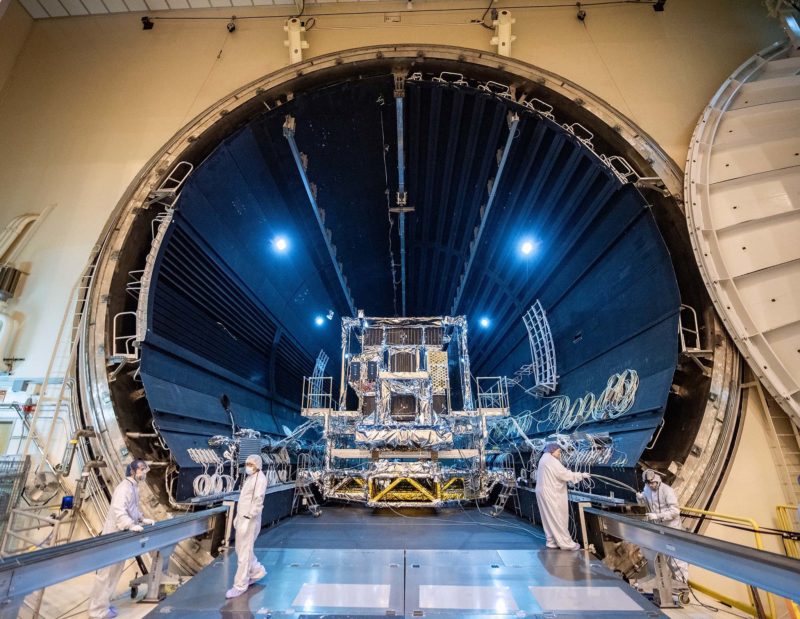
Lockheed Martin Corp. has completed the ahead-of-schedule construction and testing of the fifth geostationary-orbiting Space-Based Infrared System (SBIRS GEO-5), with an expectation that this “global guardian” for ballistic missile warning and defense will launch atop a United Launch Alliance (ULA) Atlas V booster sometime next year. Having built the satellite in just five years, it is understood that the elimination of unnecessary programmatic oversight and reporting, a restructured test program and a streamlined production schedule have contributed to this earlier-than-anticipated completion of SBIRS GEO-5.
At the same time, the U.S. Space Force has declared that the fourth Block III Global Positioning System (GPS) navigation and timing satellite—launched on 5 November—has completed its on-orbit checkout in record-breaking time and been turned over to the global user community.
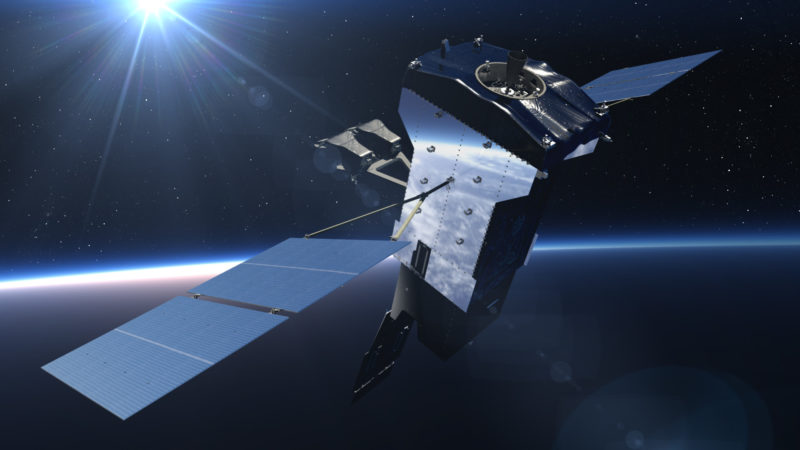
SBIRS GEO-5 represents the fifth geostationary-orbiting element of an upgraded set of space-based infrared “eyes” and follows on from four previous missions lofted atop United Launch Alliance (ULA) Atlas V boosters between May 2011 and January 2018. SBIRS is part of a multi-billion-dollar Pentagon effort to replace the earlier Defense Support Program (DSP) network of missile early-warning satellites, whose own ancestry extends back to the 1970s.
SBIRS is expected to enable the United States’ space surveillance needs for the next two decades, with focuses including advanced early warning, missile defense and battlespace characterization. In its complete form, it will feature six “GEO” satellites in geostationary orbit and associated sensors aboard the HEO-1 and HEO-2 satellites, launched into highly-ellliptical orbits in June 2006 and March 2008.
The successful launch of SBIRS GEO-1 in May 2011 marked the culmination of a long and tortured development process, which saw costs balloon by over 400 percent from an estimated $4 billion to over $17 billion. According to General Accounting Office (GAO) auditors, as reported by Defense Industry Daily in February 2013, the program suffered from “immature technologies, unclear requirements, unstable funding, underestimated software complexity [and] poor oversight”.
As circumstances transpired, the Air Force’s apparent lack of alternatives for an urgent national requirement to have an advanced infrared surveillance system in orbit to actively monitor ballistic missile launches and nuclear events seems to have prevented SBIRS’ cancelation. Its capabilities include highly sophisticated scanning/staring sensors, with improved infrared sensitivity and the scope to provide wide-area (“scanning”) surveillance and small-area (“staring”) observations. Three further SBIRS GEO satellites were launched in March 2013, January 2017 and January 2018.
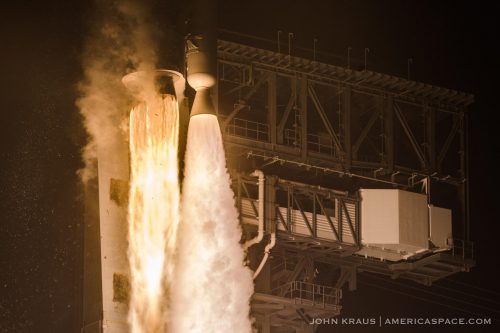
In the meantime, a $284.4 million contract for the purchase of long-lead items for GEO-5 and GEO-6 were awarded in March 2013, ahead of the definitive $1.86 billion deal between the Air Force and Lockheed Martin in June 2014 to fabricate both satellites. At the time of the award, it was noted that the contract formed part of “a thoughtful acquisition strategy aimed at further reducing cost and cycle time”. In particular, more than a billion dollars’ worth of saving were achieved through “block-buy” contracting practices and the elimination of unnecessary program oversight and reporting, a restructured test program and a streamlined production schedule.
In September 2017, both GEO-5 and GEO-6 wrapped up their Critical Design Review (CDR) at Lockheed Martin’s Sunnyvale, Calif., facility, with Col. Dennis Bythewood, director of SMC’s Remote Sensor Systems Directorate, praising the “resiliency” of the program. Upon the completion of the CDR, both satellites moved directly into manufacturing and integration. In February 2019, ULA was awarded a $441.6 million contract to launch three payloads—including SBIRS GEO-5 and GEO-6—with an expectation that the GEO-5 element would fly atop an Atlas V from Space Launch Complex (SLC)-41 at Cape Canaveral Air Force Station, Fla., as early as March 2021.
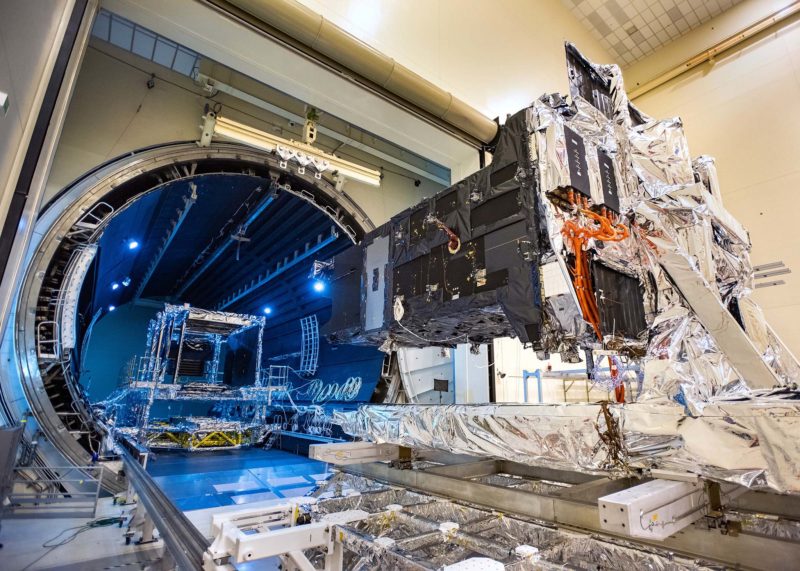
In spite of the traumas that 2020 has brought in terms of the worldwide march of the COVID-19 coronavirus pandemic, GEO-5 pressed smoothly through Thermal Vacuum (TVAC) testing earlier this summer, described as a “major milestone” in readying the satellite for final assembly. “Lockheed Martin Space overcome COVID-19-related challenges,” noted the Air Force, “to maintain assembly and test operations with minimal impacts.”
The design of SBIRS GEO-5 is based upon Lockheed Martin’s tried-and-true AM2100 “bus”, equipped with twin solar arrays and a powerful communications and imaging payload. In what has been described as a “technical refresh update”, their newer components and more modern electronics are expected to achieve a boost in capability and reliability. The new SBIRS birds benefit from 26 enhancements, ranging from improved cyber-hardening, greater spacecraft power, propulsion and electronics, common components to streamline manufacturing and a flexible design architecture.
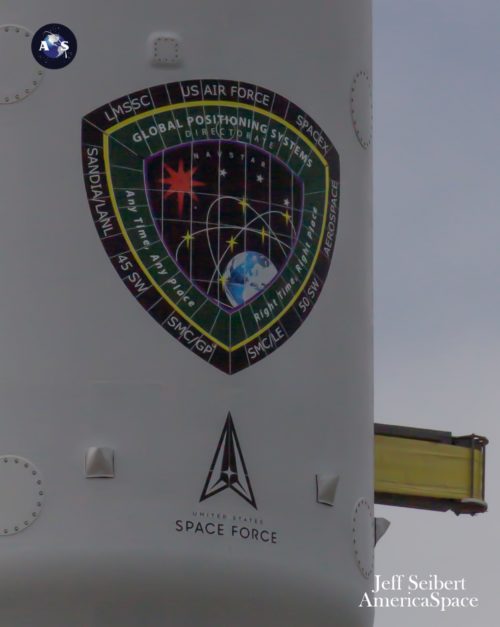
According to Lockheed Martin, GEO-5 was completed in a record-breaking five years and is an incremental step towards the Next-Generation Overhead Persistent Infrared (Next-Gen OPIR) follow-on series of satellites, expected to enter service later this decade. Those spacecraft are also being built by Lockheed Martin, with a Northrop Grumman Corp./Ball Aerospace team expected to finalize the CDR on the imaging payload in May 2021.
Led by the Infrared Space Systems Directorate at the Air Force’s Space and Missile Systems Center (SMC) at Los Angeles Air Force Base in Los Angeles, Calif., the satellites and their ground systems are operated by the 460th Space Wing at Buckley Air Force Base in Aurora, Colo. “SBIRS’ role as an ever-present, on-orbit guardian against global ballistic missile threats has never been more critical,” said Tom McCormick, Lockheed Martin’s vice president for OPIR Systems. “In 2019 alone, SBIRS detected nearly one thousand missile launches, which is about a two-fold increase in two years.”
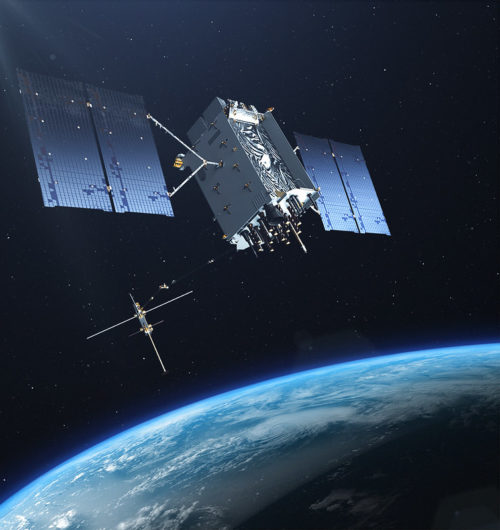
With SBIRS GEO-5 having officially been confirmed as complete on 29 October, it was announced on 3 December that the fourth and most recent Block III Global Positioning System (GPS) navigation and timing satellite—launched last month atop a SpaceX Falcon 9 booster from the Cape’s SLC-40—has received Operational Acceptance by the U.S. Space Force.
In reaching this milestone, the satellite becomes “usable” less than four weeks after it left Earth. By contrast, the three previous Block IIIs took considerably longer. GPS III-01, launched in December 2018, was not declared operational until January 2020; GPS III-02, launched on the Delta IV Medium’s swansong flight in August 2019, became usable in April of this year; and GPS III-03, launched last June, came fully online in October.
“With the onset of SV04, the GPS constellation continues moving forward in next-generation modernization,” said Capt. Collin Dart, flight commander of the 2nd Space Operations Squadron, referring to GPS III-04 by its formal military designator of “Space Vehicle-04”.
“SV04 also sets a new standard for handover from the contractor launch team to operational acceptance, setting the satellite healthy to the global user community approximately 30 days post-launch. Moving forward with future GPS III launches, the timeline between launch and the satellite being set healthy will be at a minimum.” Capt. Dart added that the next GPS Block III—the GPS III-05 bird—is currently targeted for launch atop a SpaceX Falcon 9 booster in July 2021.
FOLLOW AmericaSpace on Facebook and Twitter!
Missions » GPS » Missions » SBIRS »





2 Comments
2 Pings & Trackbacks
Pingback:ULA Primed for 17 May Launch, First of Eight Atlas V Missions for 2021 « AmericaSpace
Pingback:ULA Primed for 17 May Launch, First of Eight Atlas V Missions for 2021